Grey & Red Motors, Alfa Owners Ignite and Cop Chases - Morley's Workshop 428



|
Red motor conspiracy - the Kiwi connection, Alfa love/hate, 'Homicide' TV Series explored, and more...
MORLEY'S WORKSHOP
Got some more red-motored EJ info. Well, a rumour anyway. This new snippet neither confirms nor denies the theory in question, but it’s an interesting little piece of the puzzle, so I thought I’d share.
I got an email from reader Rick Fisher who sent me a couple of cut-and-pastes from an online-forum discussion on this very subject. The forum dated back over a decade, but we all know this debate has been raging since long before then. Now, I’m not going to try to justify or debunk the following statement, but I’ll just offer it up as it was presented to the forum members and you can make up your own mind.
The guts of the statement was that six or seven EJ utes were fitted with red motors from the factory but they weren’t sold in Australia. In fact, they were exported to, and sold in, New Zealand to test the Kiwi market for commercial vehicles back in the 60s. Now, that in itself is the kind of statement we’re used to hearing on this subject, but what’s interesting is how it came to be known.
Here’s how that happened (apparently): New Zealand has always had a thriving speedway scene and back then, the local lads and lasses (New Zealand was the first country in the world to give women the vote. And, according to research I just made up, speedway licenses.) were keen on running Holdens on their dirt-tracks at the weekends. But what they wanted to do was use the much cheaper (vastly more plentiful) EJ bodyshell rather than the expensive and newer EH body. Of course, they also wanted to run the much more powerful, reliable and tuneable red motor, but the rules of the day said that unless the EJ had a factory option of a red motor, it wasn’t going to happen. So, somehow, somebody managed to dig up enough info on these six or seven EJ utes to convince the speedway officials that the red-motored EJ Holden had, indeed, been a production reality. To the extent that the officials agreed and allowed 179 cubic-inch EJs to flog around the local clay ovals to rapturous Kiwi applause.
Now, if you’ve ever tried to convince a motorsport official of anything he or she doesn’t already agree with, you’ll know that this can’t have been easy. Like I said, I’m not claiming the story to be true or even proof or otherwise of the red-motored EJ’s existence, but if the story isn’t true, somebody has gone to great lengths to concoct a pretty good yarn. Either way, it’s a good one. Save it for the pub on Friday.
Elsewhere in this column, you’ll read about another reader who has got in touch to report on a couple of red motors destined for South Africa. Again, it’s interesting because it suggests that just because Holdens were made here, doesn’t mean we – even now – know everything about them and how they were engineered and specified for foreign markets.
HERE'S MY TIP
Top tip

It’s definitely winter down here in sunny Melbourne at the moment. In fact, daytime temperatures in the last few days have struggled to reach double digits. So my tip when the weather is like it is, is to not even bother trying to paint anything. It’s just too cold for the paint chemistry to work properly. I mean, spray booths are heated, right? Yep, and for a very good reason. Your typical shed is also where most backyard painting takes place, and if you thought the house was cold, wait till you walk down to the shed. Also, a lot of sheds are made from metal and condensation can be another big problem that is totally at odds with trying to apply a new coat of paint to anything.
LETTERS
Long term EH

Those who complain about the ongoing discussion regarding red motors in EJs are missing some of the point. Discussions and ideas being shared is an integral part of Unique Cars and should always remain so.
I was interested in seeing in this column a photo of a page from a genuine service manual. I was interested because I also have a copy of this manual. When I looked, I saw that things were slightly different in my copy. Not that this proves anything one way or the other, but it does establish that there may have been a later edition of an EJ manual and covered red motors in EJs.
Before I finish, my stable has gotten a lot smaller as my years advance. I am left with my Ford RTV, my Honda Cruiser and my EH. I can remember exactly how long I’ve had the EH, but it’s close to 30 years. It’s never been restored, but it has been improved over the years and has been kept on full rego. I dropped a spring-washer down the carby about 20 years ago that resulted in the fitting of a replacement engine. In those days, we didn’t worry too much about keeping things original, so the replacement engine was a 179, but not a HP block as the original had been. (There’s another Pandora’s Box for you). Currently it’s bored to 186 cubic-inches and runs cast-iron headers, electronic ignition and XU1 cam and Holley carb.
Keep up the good work.
David (Cookie) Cook,
Little River, VIC
I’M NOT SURE your book is different to the one I saw, Cookie. The pic you’ve sent me is the one in question and – if I’m on the right tram here – shows a red motor being lifted from an EJ engine bay. As I said at the time, the split cowl vent that can be seen in the illustration is definitely an EJ calling card, yet the motor is apparently a red.
And you’re dead right about this column being a forum for exchanging ideas and opinions, not for just jumping up and down and typing in CAPITALS. Your EH, meantime, sounds fantastic. Interesting that you can’t remember exactly when you bought it, but I guarantee it aint for sale, right? And that engine spec is classic Holden six stuff. In fact, I’ll go a step further and bet money (even though you haven’t mentioned it) that it runs an XU1-spec alloy cam-gear rather than the old fibre gear that was pretty much guaranteed to fail somewhere remote, dark and totally inconvenient. Am I right?
Rare reds?
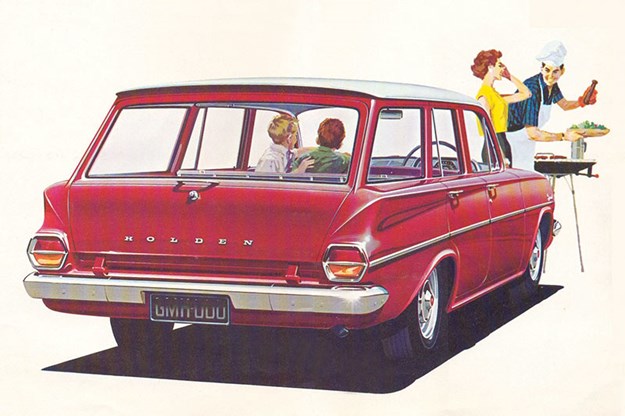
Many years ago I worked in a well known engine reconditioning shop. We had two Holden red motors come in for reco, both of them 138 cubic-inch capacity. The capacity was cast into the block as it is on all red motors. Of course, they caused a few questions but it was my understanding they were from South Africa and were destined to be returned there after being rebuilt.
I have not seen one of these since and believe they were not sold here. I have mentioned these engines in conversation over the years but most experts didn’t believe me. Were these the ones we all heard rumours about but never saw prototypes? Don’t know if this is any help or just deepens the mystery of EJ Holdens with red motors.
Howard Burton,
Email.
G’DAY HOWARD. I’m not so sure that the 138 cubic-inch red motor was as rare a beast back in the day as some folks seem to think. I agree that the pair of 138 reds you reconditioned back in the day could have been from South Africa, and from memory, a lot of export markets that Holden was supplying had either legislation or fuel prices that made a smaller capacity red motor very popular. That said, wouldn’t it have been a whole lot easier to send a set of pistons, rings, bearings and a gasket set to a mechanic in South Africa, rather than shipping whole engines back to Oz to be rebuilt?
Meantime, I also recall that the 138 red motor was fitted to quite a few LC and LJ Toranas, and you still see them getting around with `2250’ badges on their bootlids (the actual capacity was, apparently, 2262cc). And when you convert 2262cc to cubic-inches, it comes out to – ta da – 138.
While Holden’s red motors did go up in capacity over the years, the 138 bucks that trend. Released for 1969 (and the LC Torana) it was a few years behind the first of the red motors which were 149 and 179 cubic-inches. Of course, with the move to the FB Holden model in 1960, Holden bumped the capacity of the old grey motor from 132 cubes to 138, so maybe that’s where some of the confusion creeps in. But beyond their capacity, the 138 grey and the 138 red had very little in common.
Love that radar
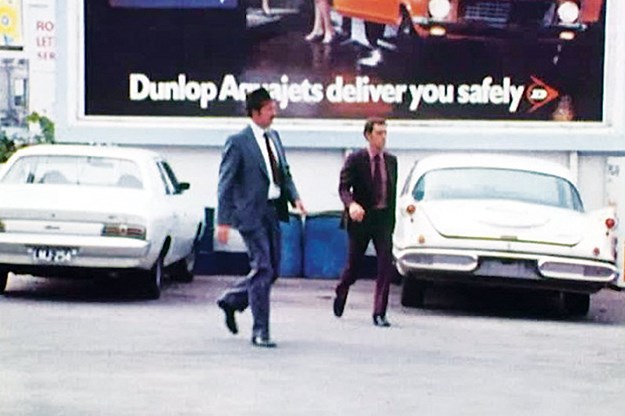
Sorry Morley, but the best driving song ever – and it’s definitely no contest – is "Radar Love". Here’s a very distant second for you: "Autobahn" by Kraftwerk (full version 22 minutes!). As for hero cars, the Mustang in Hunter was great except I seem to remember they used to speed up the chase scenes which was crappy. And here’s one for the common man; the white XP Falcon the Ds drove in Homicide. We all saw it every week, as well as the big Rambler and other Aussie makes that followed. The stunt driving through city streets and the suburbs was always terrific, no speeding up the tape required! Actor Leonard Teale was behind the wheel of the Kingswood, an accomplished amateur racing driver… no stunt driver required for this one.
Geoff Dunstan
Merimbula, NSW
I CAN JUST remember watching Homicide, Geoff. And probably the only reason I was allowed to stay up that late was because my old man was a copper in the NSW Police at the time. My main memory of Homicide was the opening sequence where the XP pulls up and four big, burly plain clothes wallopers pile out, each one slamming the door one after the other. To this day, when I hear four car doors being slammed shut in order, I’m always reminded of those opening credits. Leonard Teale was an interesting bloke. I discovered that he was actually born Leonard Thiele, but changed his surname to Teale (probably to appear less ethnic – although he was born in Australia – at a time when the entertainment industry was not as inclusive as it is today.
His early work was in radio where his booming voice made him a natural for roles such as Superman and Tarzan, but his best-known TV role was probably as Mac Mackay in those early Homicide series. And yes, he was a great driver. In fact, Toyota made him a factory driver for its dabble in Rallycross in the late 60s and early 70s when television was making motorsport suddenly sexy. But even before that, Teale had proven himself a dab hand at the helm racing factory Toyotas at Bathurst in the mid-60s. So, yeah, he was probably well qualified to be doing the wheel-work on the set of Homicide.
I actually got to meet Leonard, a couple of years before he died in 1994. It was the Toyota LandCruiser 80-Series launch and Toyota had invited Leonard to come along and join us as we camped overnight in the high-country. As well as being a completely approachable fella who liked a chat, as the sun went down, Leonard dusted off his tonsils and launched into a rendition of "The Man from Snowy River". Wasn’t a dry eye in the house, I tell ya. And, yes, I got a real buzz out of telling my dad the story of the time I met Mac Mackay from Homicide.
No pedestrian
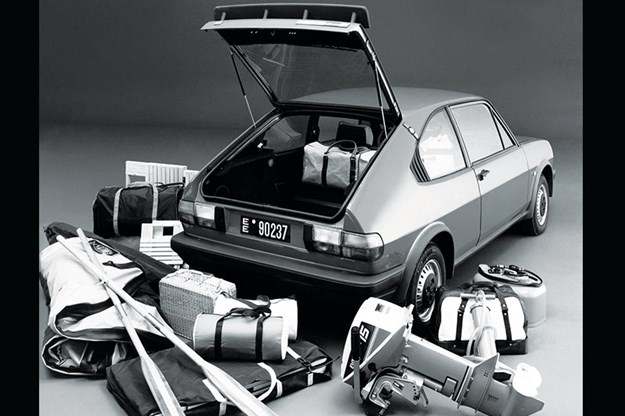
Mr Morley, my Alfa Romeo Alfasud 1.5 ti 1982 model has been around the clock three-and-a-bit times now. I worked at Mount Magnet for 19 months and that meant a six-and-a-half-hour non-stop journey. Other journeys to Kalgoorlie and Albany have never had the car let me down.
Also, try this one: Sit at your normal driving position – with long-arm driving technique – and have a six-foot-three pal sit behind you. Then notice that his head does not touch the roof and his knees are not touching the back of the driver’s seat. Not bad for that wheelbase Mr Morley. Oh, and mine is the two-door) I suggest you stop Holdenating and look deeper in future
Donald J Beus
Gooseberry Hill, WA
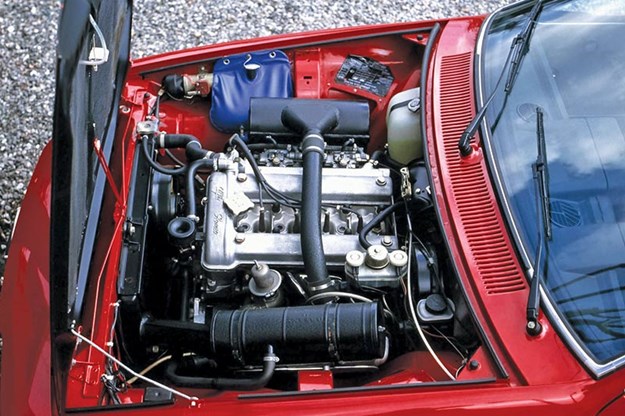
JEEZ, I’VE BEEN copping it in the neck for suggesting that some 1970s and 80s Alfa Romeos might be a tiny bit problematic. Trust me Donald, yours wasn’t the only letter taking me to task on this.
Thing is, I have to stand by the sentiment of the statement, but let me qualify it; early Alfas can send you to the poor-house via the nut-house. But then, so can a whole bunch of elderly European cars. Old Benzes rust, elderly BMWs can eat their own engines and dashboards (and rust). Jaguars? Lord, Jaguars…where do I start?
Again, it’s a statement that has its roots in truth but that doesn’t stop me loving these old gadgets. I’ve previously owned a 1961 Benz (and, yep, it quietly rotted away) and I still have a geriatric Jag in my shed. I’ve never really been game enough to take on an Alfa, but I’ve talked to plenty of blokes who have and the experience is not always as rosy as yours with your Sud.
I’ve seen enough Alfas with dodgy electrics (a brand-new GTV6 I drove to Adelaide for a 1980s Grand Prix randomly blew the wiper fuse about six times during the trip and had an interior that looked like it had been thrown together from 50 yards away) and an Alfetta owned by a mate of mine used to destroy its rubber driveshaft donuts every other month. And that Alfetta and the 105 GTV of another buddy both rusted from the inside out. So when anybody asks me about this stuff, I have to tell the truth. I could make up a fairy-tale about old cars being perfect, but that’d be wrong.
By which I mean, don’t shoot the messenger: If a reader asks about buying an old Alfa and I tell them that it’ll all be rainbows and unicorns, I’m not being honest, am I? At which point I’m not doing my job.
The other thing is, I’m not casting aspersions on your sanity or intelligence should you choose to take the plunge and own an Alfa. I applaud your bravery and your sense of adventure, not to mention the fact that Alfa owners are passionate enough to place personality above many other considerations. I mean, you could drive a white Toyota, right? By the way, did I mention that early Toyotas had awful rust and cylinder head problems… Oops, here we go again.
Who’s the stubbornest one of all?
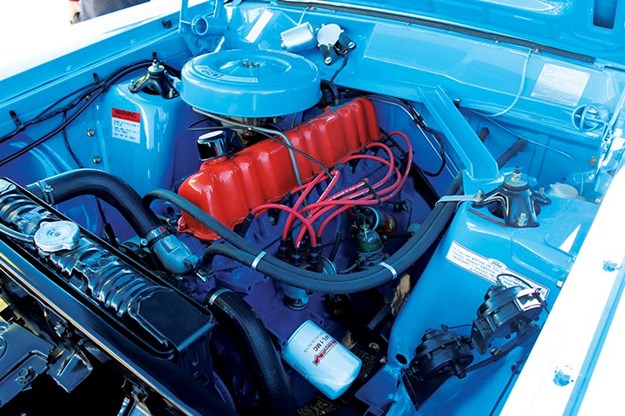
I have a Jaguar E Pace housed in a very narrow garage. Unfortunately the left-hand wing mirror cover had a confrontation with the brick pillar. Not too bad, but bad enough.
I purchased a replacement cover in the correct colour from a supplier in England. However, unlike most other vehicles and other Jaguars the wing mirror doesn’t slip off with a little persuasion. This cover has three very aggressive arrow type fixings which locate with the main body. It seems that the removal procedure is a very closely guarded secret housed in the Jaguar vaults, never to be disclosed, so I’m looking for some professional guidance.
Just looking at it logically, it seems to me that the mirror should be directed to the extreme up or down position to expose under the mirror, then maybe a trim-removal tool with a ‘V’ notch to compress these clips. But which end to start? Frankly I don’t know so I thought of you, aren’t you lucky? Attached is a picture of these clips.
Brian Cleaves,
Castle Hill, NSW
HMMM. I LOOKED up a video tutorial on this subject (Never under-estimate the internet for harbouring people who’ve had exactly the same problem as the one you’re having right now.) and while I could find out about earlier Jaguar mirrors (which lift up and pop off) the uncharacteristically (for this column) new E Pace was not among them.
I guess you could go to a panel shop, show them the bits and see if they can figure it out. Chances are they’ve seen this stuff before, so it might even be a give-us-five-minutes-and-we’ll-do-it-for-you deal (with the appropriate twenty bucks or a bottle of red changing hands).
I’m tempted to say that whatever you do, don’t resort to brute force. If those little plastic arrows get snapped off or even if the plastic they’re made from gets `bruised’, it aint gonna end well for you and your Jag. But the reality is that the cover you’re trying to remove is already damaged, right? So what have you got to lose by risking breaking it further in the removal attempt?
As long as you don’t damage the new cover putting it on, and you don’t damage any part of the mirror assembly you’re intending to keep, then what does it matter if the old cover comes off in multiple pieces? Am I over-simplifying this?
Meantime, the picture you sent me clearly shows that while the cover is not designed to come off easily, those little clips are indeed designed to allow it to be snapped into place without too much hassle. So once the old cover is off, I reckon you’re about 10 seconds away from a brand-new E Pace.
The real lesson here is along the lines of something cartoonist Bernard Kliban alerted us to in 1976: Never eat anything bigger than your head. Which, for people like us, translates to never buy a car bigger than your garage.
On the P15S
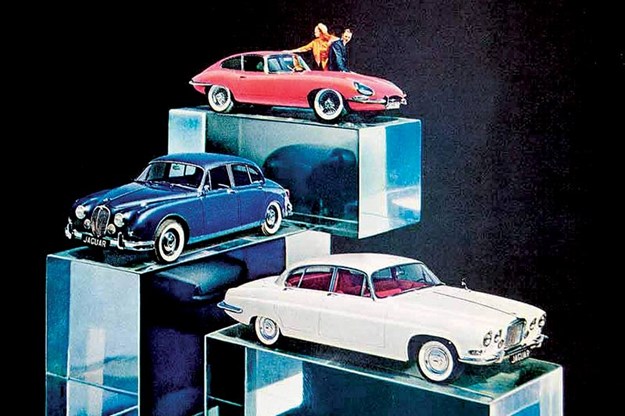
Mooooorrrrrley, help me, please. Exhibit A page 94 last issue (426) explains everything about the old Holden engines, but on page 126 of the same issue young Jimmy Hodges’ 1972 XY Falcon 4x4 looks like it’s got a slant-six in it. Could this be the case or do you think I should dry out for an issue or two and have another look? Sorry in advance…
Robert Bawden,
Ravensthorpe, WA
I WENT BACK through my old copies of UC, Robert, and found the photo you’re talking about. And blow me down if it doesn’t look like the engine is tilted. I almost dialled AA myself at that point.
But here’s the thing, the Valiant slant-six had its inlet manifold on the passenger’s side of the car, so the engine in Jimmy’s 4X4 Ute is definitely a Ford six. But it got me wondering, is this just a trick of the camera’s lens, or was the Falcon six canted over a few degrees to – for argument’s sake – allow the sump to clear the front diff or something equally oddball.
So I talked to Rob Blackbourn who actually worked at Ford Oz when these things were in showrooms. Since old Blackers was able to bore me rigid at lunch the other day talking about the spare wheel in these XY four-bees, I figured he might know more. And it turns out, Robert, that we can cancel our respective appointments with the local rehab centre. Because the engine is, indeed, leaned over in these one-off XY Utes.
Turns out my hunch was right; the diff centre and front driveshaft needed to live where the bottom of the 250 cubic-inch Falcon motor would have otherwise sat. So Ford’s engineers gave the motor a tweak and leaned it over a few degrees. Of course, it wasn’t as simple as that, and the revised engine position required a new sump, new oil pick-up placement and new engine mounts.
Blackbourn added (of course he did) that a lot of blokes who re-powered these utes with a more modern Falcon six in subsequent years ran into a few problems because the galleries that drained the oil from the rocker-cover back to the sump on these later motors, wound up on the high side with the engine canted over. So they were running around with about two litres of oil sloshing around in the rocker-box when it should have been back in the sump saying hello to the pump pick-up.
Well spotted…deserves a drink, I’d have thought.
TRIVIAL PURSUIT
Tojo's toys

Maybe you know that Mitsubishi was the company responsible for building the Zero fighter planes that the Japanese Air Force used to devastating effect in World War 2. Which means Mitsi was making planes long before it made cars. Well, the same goes for Subaru. Nakajima Aircraft built the Hayabusa fighter for the Japanese during WW2 and was then, after the war, split into 12 smaller companies. Some of those banded together and became Fuji Heavy Industry, from which the Subaru brand was born.
Out there
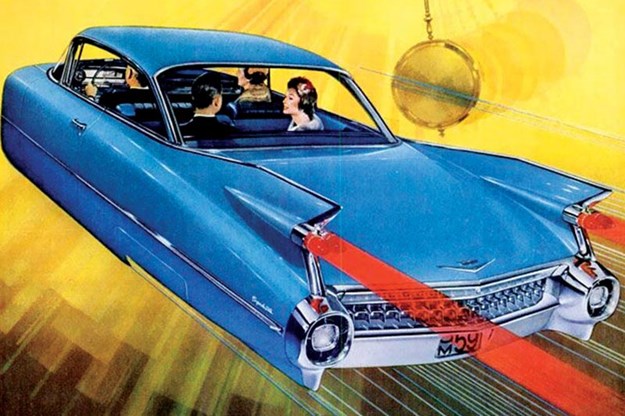
I’ll admit I’m a bit of a space and science nerd, and one of the things that absolutely bends my brain is the sheer distances involved when it comes to getting around the universe. Or even the Milky Way. So it’s tempting to think that to get to the moon by car would take an aeon as well. But no. If you factor in that the moon is 484,000km from us (it varies thanks to the elliptical orbit) and you drove at 100km/h without ever stopping, you’d get to the moon in five-and-a-bit months. But, jeez, your car would need a service.
Write to Morley c/o uniquecars@primecreative.com.au or Unique Cars magazine, 379 Docklands Drive, Docklands, Victoria 3008
Classic Australian Family Car Value Guide home page
Muscle Car Value Guide home page
Japanese Classic Car Value Guide home page
Unique Cars magazine Value Guides
Sell your car for free right here
Get your monthly fix of news, reviews and stories on the greatest cars and minds in the automotive world.
Subscribe

.jpg)









.jpg)




